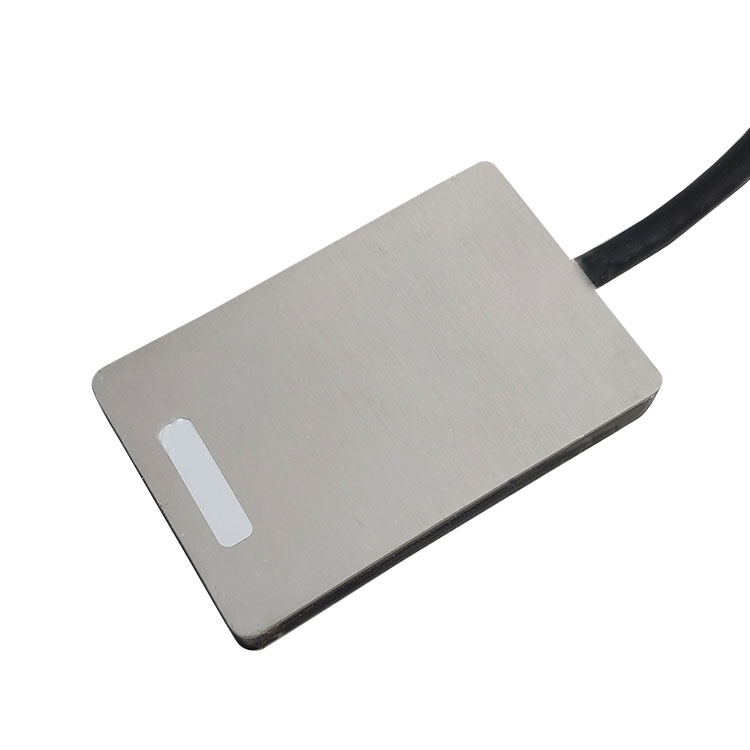Tianyi Sensor IOT Technology Co., Ltd
Sales Manager:Ms. Emily Wang
Cel,Whatsapp,Wechat:+86 15898932201
Email:info@fengtutec.com
Add:No. 155 Optoelectronic Industry Accelerator, Gaoxin District, Weifang, Shandong, China

Sales Manager:Ms. Emily Wang
Cel,Whatsapp,Wechat:+86 15898932201
Email:info@fengtutec.com
Add:No. 155 Optoelectronic Industry Accelerator, Gaoxin District, Weifang, Shandong, China

Model:FT-TL1
Brand:tianyi
1.Soil heat flux sensor product overview
Soil heat flux sensor is used to measure heat flow in soil. It can accurately capture heat transfer on the soil surface and at different depths.Soil heat flux sensor, also known as heat flux plate, soil heat flux plate, heat flux meter, etc., is an instrument used to measure heat flux and can be used for internal soil measurement.It is output in the form of a thermopile, which is proportional to the heat flux, and is easy to operate and is especially suitable for measuring the thermal conductivity of soil, building walls and glass walls.The soil heat flux value measured using a heat flux plate buried 2 cm in the soil.During the year, it changes with the seasons.In summer, the soil heat flux is positive, and the existing heat enters the soil layer, and the amount is large; in winter, the soil heat flux is negative, and the heat in the soil is released into the atmosphere, but the amount is small.
2.Scope of application of Soil heat flux sensor
This product can be widely used in the environment, agriculture, forestry, planting, construction, etc.
3.Soil heat flux sensor technical parameters
Supply voltage: □12-24V □5V
Output signal: □ Current type 4~20mA □ 0-2V □ RS485 customized
Measurement range: -200 to 200w/m2
Internal resistance is less than 300Ω
Measurement accuracy: less than 5%
Hot flow calculation formula
Heat flow (w/m2) = coefficient (w*m-2/mv) * output (mv)
Working current: 12V power on about 26mA
4.Functional features of Soil heat flux sensor
1.Small size, fast and accurate measurement
2.Low-power design, adopt reasonable power consumption control mode
3.Stable performance
5.Soil heat flux sensor measurement method
1.Methods for measuring in soil
The plate surface should be placed horizontally in the soil layer perpendicular to the direction of heat flow.The buried depth of the sensor is usually 3-10 cm deep from the natural lower surface.It should be avoided directly on the soil surface as much as possible, because the natural lower surface is not a geometric plane, and the slight fluctuations on the surface will make the sensor readings lose their representation.At the same time, the direct contact of the upper surface of the sensor with air may also cause radiation errors.Usually, a representative area is selected in the observation site and dig a section vertically down with a shovel.
Measure the required depth downward from the soil surface along the section, and then hollow it in the horizontal direction.The size of the heat flow plate can be placed just in place, so that the upper and lower sides of the sensor can maintain good contact with the soil, lead the wires along the section and then backfilling the soil.However, it should be noted that the buried depth of the heat flow plate should be the distance between the center line and the soil surface.
2.Methods of measuring on the wall
First, apply the surface of the heat flow sensor evenly with Vaseline, and attach the heat flow sensor coated with Vaseline to the surface of the wall, so that the wall and the heat flow sensor can make close contact.After staying for a few minutes, the measurement can be started after the heat flow sensor is adapted to the ambient temperature.
Negative oxygen ions are hailed as “air vitamins” and are extremely beneficial to human health. As people’s awareness of health and pursuit of tourism quality have improved, scenic areas’ implementation of negative oxygen ion detection projects can not only create a healthy and comfortable touri...
Reservoir safety, particularly the flood prevention capacity of the vast number of small and medium-sized reservoirs, is a critical yet vulnerable link in China's flood control and anti-flood system. Facing the current situation of numerous reservoirs built in the last century, which generally s...
Every flood season, heavy rainfall occurs frequently, causing water levels in rivers and lakes to rise rapidly, and the risk of flood disasters increases significantly. During such a special period, the Radar Current Meter, as a professional hydrological monitoring device, becomes an important tool...
The Eleven - element Photovoltaic weather station is a meteorological monitoring device used in the field of distributed photovoltaic power generation, capable of real - time monitoring of multiple meteorological elements:Scheme 1: Wind speed + Wind direction + Average wind speed + Temperature + Hum...